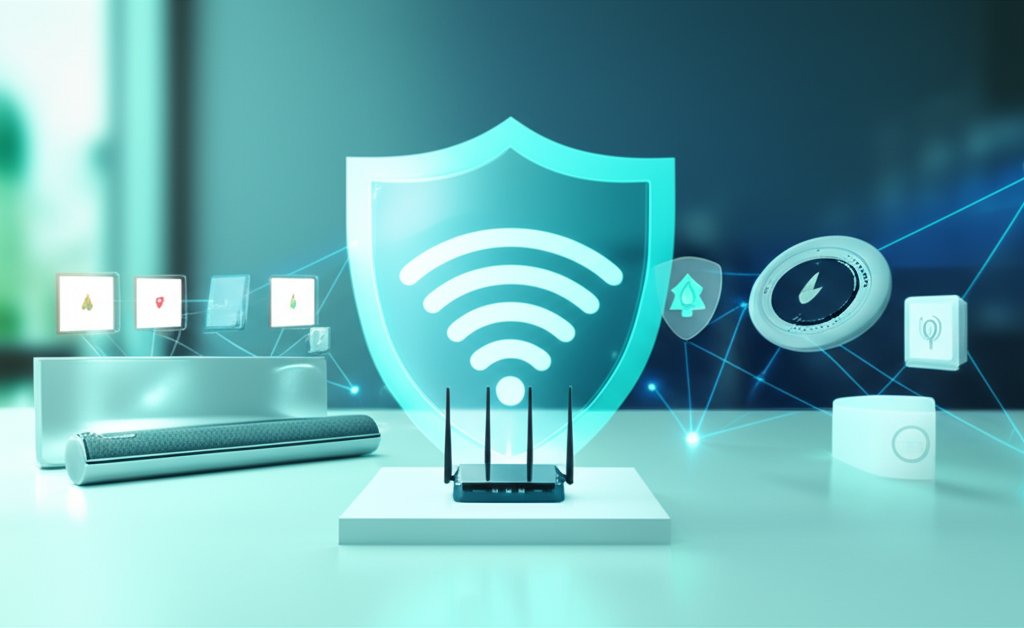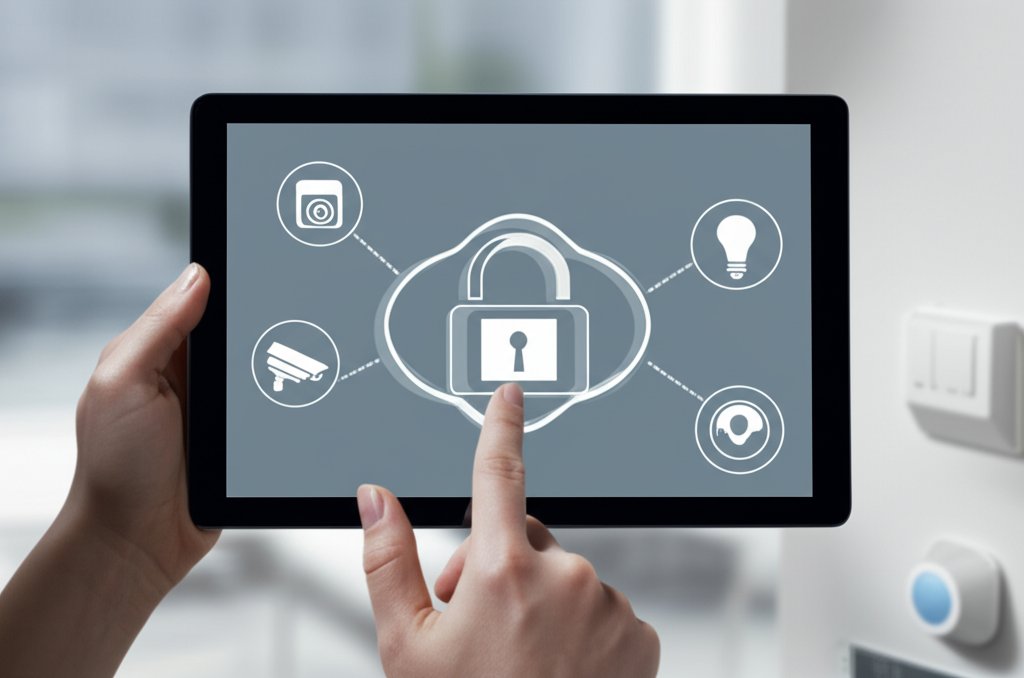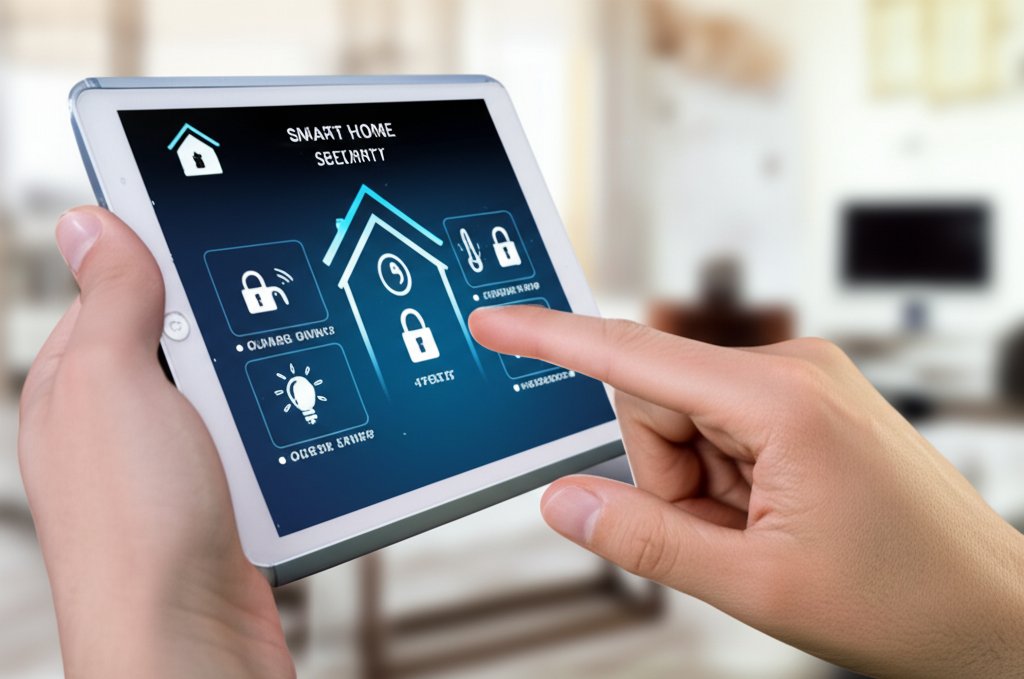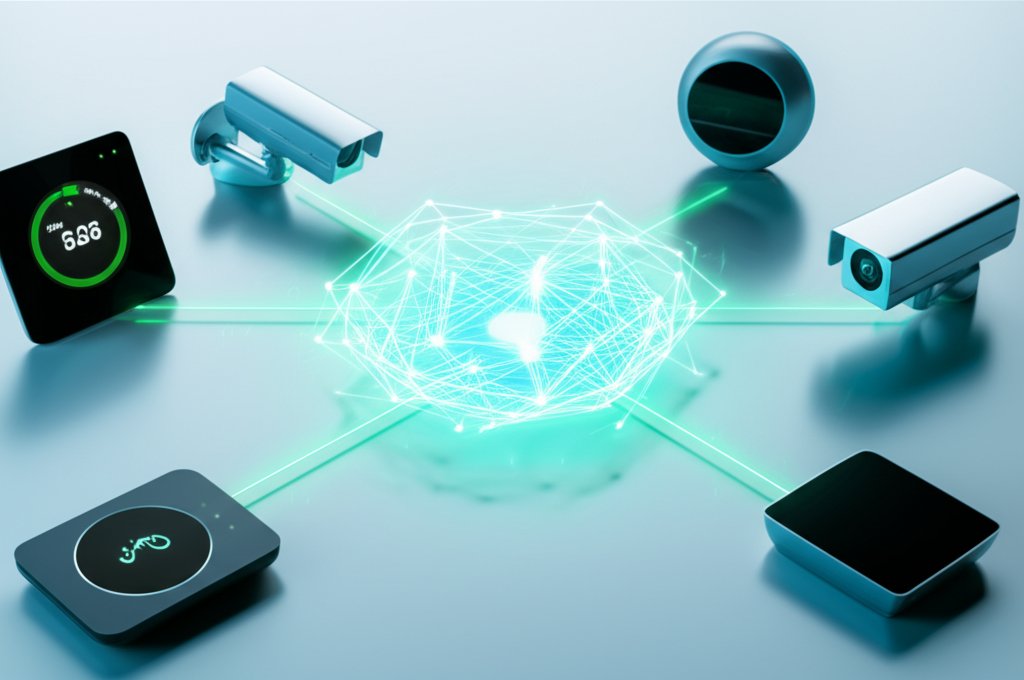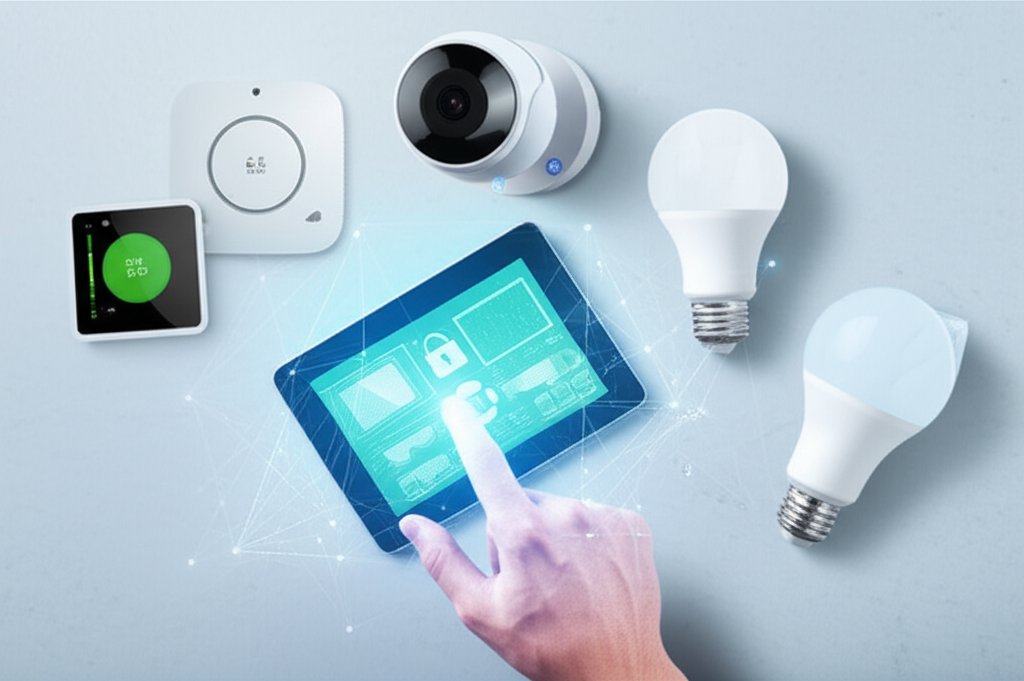The allure of a smart home is undeniably powerful, isn’t it? Imagine lights that anticipate your arrival, thermostats that learn your habits, and doors that secure themselves as you leave. It’s the promise of seamless convenience, intelligent automation, and a tangible glimpse into a more effortless future. But as a security professional, I often find myself asking: Is this convenience truly enriching our lives, or is it silently eroding our fundamental security and privacy?
The Internet of Things (IoT) has rapidly transformed our homes into intricate webs of connected devices. From smart speakers and security cameras to everyday appliances, these gadgets promise to make our lives easier. Yet, many of us overlook the potential cybersecurity threats lurking within this interconnected ecosystem. This article isn’t meant to alarm you, but to empower you. Before we dive into the deeper issues, let me give you a single, immediate action you can take right now: check and change the default passwords on all your smart devices and your Wi-Fi router. It’s a foundational step that can make a world of difference.
Now, let’s demystify the smart home security risks for everyday users like us and equip you with practical, actionable solutions to make your smart home genuinely secure.
The Hidden Side of Convenience: Understanding IoT Security Vulnerabilities
While the “smartness” of our devices is marketed heavily, the “security” aspect often takes a backseat. Why do these seemingly innocent gadgets pose such a risk?
What Makes Smart Devices Vulnerable?
- Rushed to Market: Manufacturers are often under immense pressure to release new products quickly, frequently prioritizing functionality and aesthetics over robust security testing. We’ve seen it time and again, where a shiny new device launches with fanfare, only for critical vulnerabilities to be discovered weeks later. Imagine a smart thermostat, rushed out the door, that allows an attacker to remotely adjust your home’s temperature or, worse, gain a foothold into your network because its underlying software was never properly audited. Such scenarios aren’t theoretical; they’re a common byproduct of this market pressure.
- Lack of Regular Updates: Many IoT devices, especially older or cheaper models, don’t receive timely software and firmware updates. This leaves them exposed to newly discovered vulnerabilities long after they’re identified and patched in more mainstream systems. It’s like having a house with locked doors, but the windows are wide open because no one thought to check them in years, allowing any passing opportunist to slip inside. Without these crucial patches, even the strongest initial security can decay over time, turning your convenient gadget into a persistent liability.
- Default/Weak Passwords: A shockingly high number of devices ship with easily guessable default passwords (e.g., “admin,” “12345”) or hardcoded credentials that users rarely change. If you don’t change yours, you’re essentially leaving the front door key under the mat for anyone to find. This single oversight is one of the simplest, yet most common, entry points for attackers.
- Insecure Network Connections and Protocols: Many devices rely on Wi-Fi or other common communication protocols that may not be sufficiently protected, or they implement encryption poorly. This can create easy entry points for attackers to access your private data or even take control of your devices. Ensuring your IoT devices are secure often starts with a robust network foundation.
- Lack of Proper Security Testing: Unlike enterprise software, many consumer IoT devices don’t undergo rigorous security audits, meaning critical vulnerabilities can slip through the cracks unnoticed until they’re exploited. This gap in testing is a significant blind spot.
Common Cybersecurity Threats to Your Smart Home:
These vulnerabilities aren’t just theoretical; they lead to very real threats:
- Device Hijacking: Attackers can gain control of individual devices – imagine your smart lock failing to respond, or your security camera feed being accessed by strangers. In extreme cases, they could even take over your entire home network, turning your smart devices against you.
- Data Breaches & Identity Theft: Smart devices collect a wealth of personal information: usage patterns, location data, voice recordings, video feeds, even health metrics. If compromised, this data can be stolen, leading to identity theft, targeted scams, or even blackmail.
- Privacy Violations/Eavesdropping: Smart speakers are “always listening” for their wake word. Security cameras are always recording. Without proper safeguards, these can become tools for unauthorized surveillance, allowing malicious actors to listen in on your private conversations or watch your home without your consent.
- Denial of Service (DoS) Attacks: Cybercriminals can overwhelm your devices or home network with traffic, effectively shutting them down or rendering them unusable. This can range from a minor nuisance to a critical disruption if it affects essential devices.
- Botnet Attacks: Perhaps one of the more insidious threats. Your compromised device can be recruited into a “botnet” – an army of internet-connected devices used by hackers for larger-scale attacks (like the infamous Mirai botnet). Your smart fridge or smart light bulb could unwittingly become part of an attack on a major website or critical infrastructure, often without you ever realizing it.
Specific Smart Devices, Specific Risks
Let’s look at how these general risks manifest in devices you might already own:
- Smart Speakers & Voice Assistants (e.g., Alexa, Google Home): The convenience of voice control comes with the constant listening concern. There’s a risk of unauthorized commands (e.g., ordering items you didn’t intend to), and recordings can be stored and potentially accessed by third parties.
- Smart Security Cameras & Doorbells: These are designed for security, yet ironically, they can be a major privacy risk. The danger of unauthorized viewing of live feeds or recordings is high. They also collect sensitive metadata, like precise location and email addresses, which can be valuable to cybercriminals.
- Smart Thermostats, Lights, Locks, & Appliances: While less glamorous, these devices track your daily routines and occupancy patterns. A compromised smart lock poses a direct physical safety risk, while manipulated thermostats or lights could simply cause nuisance, waste energy, or indicate when a home is vacant.
Making Your Smart Home Genuinely Secure: Actionable Steps
You don’t need to be a cybersecurity expert to protect your smart home. Here are practical steps you can take today:
- Strong Passwords & Two-Factor Authentication (2FA): This is foundational. Change default passwords immediately for all your smart devices and your Wi-Fi router. Use unique, complex passwords for every device and service. Enable Two-Factor Authentication (2FA) wherever it’s available – it adds an extra layer of defense that’s incredibly effective, making it much harder for unauthorized users to gain access even if they guess your password.
- Regular Software & Firmware Updates: Treat updates like vital security patches. Always install them promptly. Be aware that some manufacturers abandon support for older devices, leaving them permanently vulnerable; research this commitment to ongoing support before buying.
- Secure Your Home Network: Your Wi-Fi router is the gateway to your smart home. Use a strong, unique password for it. Consider creating a separate “guest” or dedicated IoT network to isolate your smart devices from your main computers and smartphones. This limits potential damage if an IoT device is compromised. Also, consider disabling Universal Plug and Play (UPnP) on your router if you don’t absolutely need it, as it can be a significant security weakness.
- Review Privacy Settings & Permissions: Take the time to delve into each device’s app and settings. Understand what data your devices collect, how it’s used, and who it’s shared with. Limit data-sharing permissions and opt out of unnecessary data collection wherever possible. Be wary of cloud storage for sensitive data; use local storage options if they’re available and secure.
- Smart Purchasing Habits: Before you buy a new smart gadget, do a little research. Look into the manufacturer’s reputation for security and their commitment to providing ongoing updates. Seek out devices that offer offline functionality or local control, reducing reliance on constant internet connections and cloud services. Always read privacy policies and terms of service – yes, it’s tedious, but it’s crucial for understanding what you’re agreeing to.
- Disable Unused Features: If you don’t need a specific feature, turn it off. For example, if you don’t use Bluetooth on a device, disable it. If remote access isn’t essential for a particular device, consider turning it off to reduce potential attack surfaces and close unnecessary entry points.
The Future of Smart Home Security: What to Expect
The good news is that the industry is slowly waking up to these challenges. We’re starting to see evolving regulations, like the EU’s Cyber Resilience Act, aiming for “secure by design” principles in IoT devices. This could mean a future where devices are built with better security from the ground up, rather than having it bolted on as an afterthought. However, the onus will always remain on consumers to stay informed and vigilant. The landscape of cyber threats is constantly shifting, and our digital defenses must evolve with it.
Conclusion
Smart homes undoubtedly offer incredible benefits, enhancing our daily lives in countless ways. But this convenience demands a conscious awareness and proactive approach to security from us, the users. Don’t let the promise of “smart” overshadow the need for “secure.” By understanding the risks and implementing these practical steps, you absolutely can secure your smart home effectively. You have the power to protect your privacy and digital safety; it starts with knowledge and consistent action.
Take control of your smart home’s security today.

